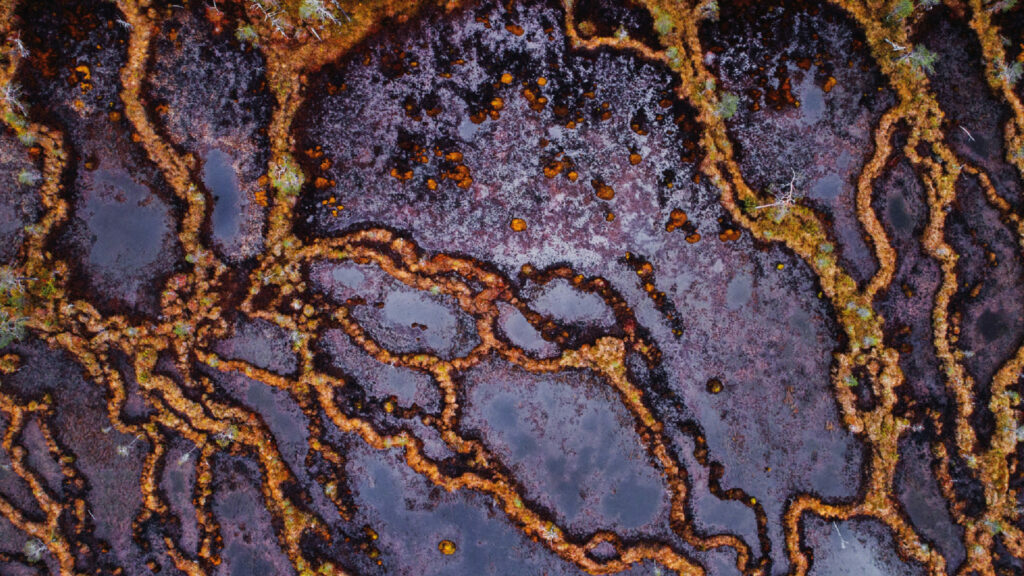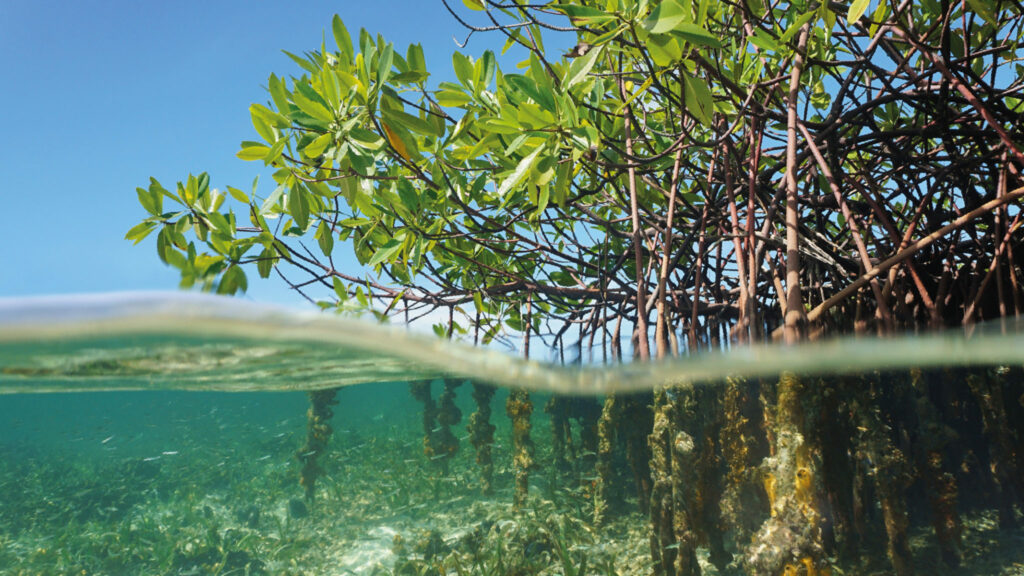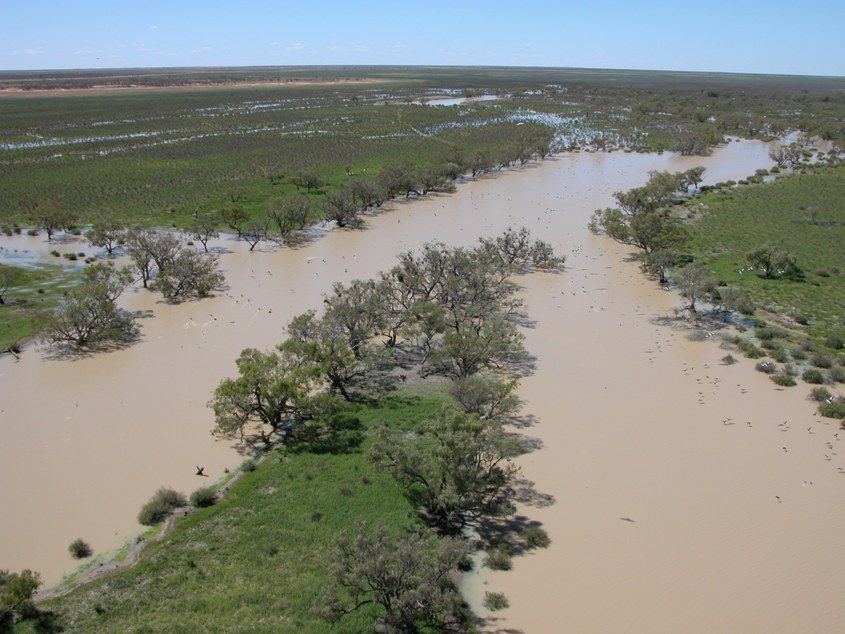
Wetlands
Wetlands occur wherever water meets land and ensure the sustainability of both.
These unique habitats include mangroves, peatlands, rivers, lakes, deltas, seagrass meadows, and even coral reefs. Wetlands exist in every country and in every climatic zone, from the polar regions to the tropics, and from high altitudes to dry regions. Healthy wetlands store carbon, regulate the water cycle, and support 40% of the world’s biodiversity. They are central to achieving an equitable, net-zero emission, nature-positive world.
Wetlands are climate superheroes
Wetland flora are vital to both adaptation and mitigation. Mangrove forests and seagrass meadows protect shorelines from storm surges and sea level rise. Mangroves are also superheroes at capturing and storing carbon. It is estimated that they store four times more carbon than other tropical forests. Peatlands cover only about 3% of our planet’s land but store approximately twice the amount of carbon than all the world’s forests combined.
Conversely, the loss and degradation of wetlands exacerbates the climate crisis by releasing greenhouse gases and leaving ecosystems, and the people dependent on them, more vulnerable to the effects of climate change.
Wetlands are biodiversity havens
Wetlands support 40% of the world’s biodiversity from large predators like sharks and tigers to migratory birds and fish. They are also home to several endemic species, not found anywhere else on the planet, like mudskippers and the Indian bullfrog. It is also estimated that 200 new freshwater species are discovered annually in wetlands! Around 1 million animal and plant species are threatened with extinction worldwide, and a large number of them depend on wetlands for their survival.
Wetlands ensure water security
Almost all of the world’s freshwater is drawn directly from wetlands. Wetlands play a crucial role in water purification, storage, and flood control. Peatlands act like sponges – absorbing excess water in times of heavy rainfall, and releasing it slowly in times of drought. Seagrass meadows and mangrove roots remove impurities and saline from seawater. Wetlands are so central to the water cycle, that a world without wetlands would be a world without freshwater. And unfortunately, the climate crisis is also a water crisis.
Threats to wetland ecosystems
We have lost 35% of the world’s wetlands in the last five decades – since 1970 – and we continue to lose them at a rate faster than we’re losing forests. The loss and degradation of wetlands has a chain reaction, driving biodiversity loss, stressing food and water supplies, and exacerbating the impacts of floods, droughts and wildfires.
The biggest threat to wetlands comes from humans. We have lost vital wetland connectivity through dams, dykes, drains, ditches, and deforestation. They have altered the hydrology of wetlands, sometimes irreversibly so. Agriculture and infrastructure have been some of the main drivers of wetland loss.
But the good news is that the solutions to restore our degraded wetlands already exist. We know how to restore the hydrology of degraded wetlands, we know that finance must flow towards nature-based solutions, and we need to phase out harmful subsidies. We know that Indigenous People are integral to sustainable conservation and that all sectors must play their part. Businesses must be held accountable for their supply chains and governments must act on their promises.
At Wetlands International, we have the expertise, experience, and knowledge needed to restore wetlands at scale, through landscape-level approaches.
Types of wetlands
Peatlands
Peatlands are wetlands with a thick water-logged soil layer made up of dead and decaying plant material. They include moors, bogs, mires, peat swamp forests and permafrost tundra. Peatlands represent half of the Earth’s wetlands and cover 3% of the global total land area.
Why are peatlands important?
Peatlands absorb heavy rainfall, providing protection against floods, and release water slowly, ensuring a supply of clean water throughout the year. Millions of people depend on peatlands for their livelihoods such as herding cattle, fishing, and farming. Tropical peat swamp forests are home to thousands of animals and plants, including many rare and critically endangered species such as the orangutan and Sumatran tiger. Peatlands contain twice as much carbon as the world’s forests.

Coasts and deltas
Wetlands in deltas and along coasts are connectors between marine, freshwater and terrestrial ecosystems. These wetlands include mangrove forests, salt marshes, seagrass beds, mudflats and even coral reefs! By regulating flows of water and sediment, they contribute to building robust and diverse coastlines.
Why are coasts and deltas important?
Coasts and deltas serve as ecological corridors that provide breeding grounds for fish and other marine fauna, stopover sites for millions of migratory birds, and hunting and grazing grounds for visiting megafauna from sharks to tigers. They store large amounts of carbon in biomass and soils – typically more than equivalent areas of rainforests. As fishing grounds, they sustain hundreds of millions of livelihoods, many of them directly dependent on wetland services. Coastal wetlands such as mangrove forests also provide vital protection from storms, floods and salt water intrusion and even sea level rise.

Rivers and Lakes
Rivers connect to major wetland systems and deltas, which are found on the lower reaches of rivers, where the flow of water slows down and spreads out into expanses of wetlands and shallow water. Rivers and lakes are critical in arid and semi-arid areas, where wetlands are characterised by seasonal rainfall and wetlands that retain water long after the rest of the landscape has dried out.
Why are rivers and lakes important?
Rivers and lakes serve as important sources of drinking water, food and irrigation for crops. River waters also recharge lakes and transport fertile sediments that enrich floodplains and marshes. Rivers play an essential role as highways for transportation and commerce and as sources of energy. Rivers and lakes provide critical habitat for fish and other freshwater animals such as amphibians and shellfish.


